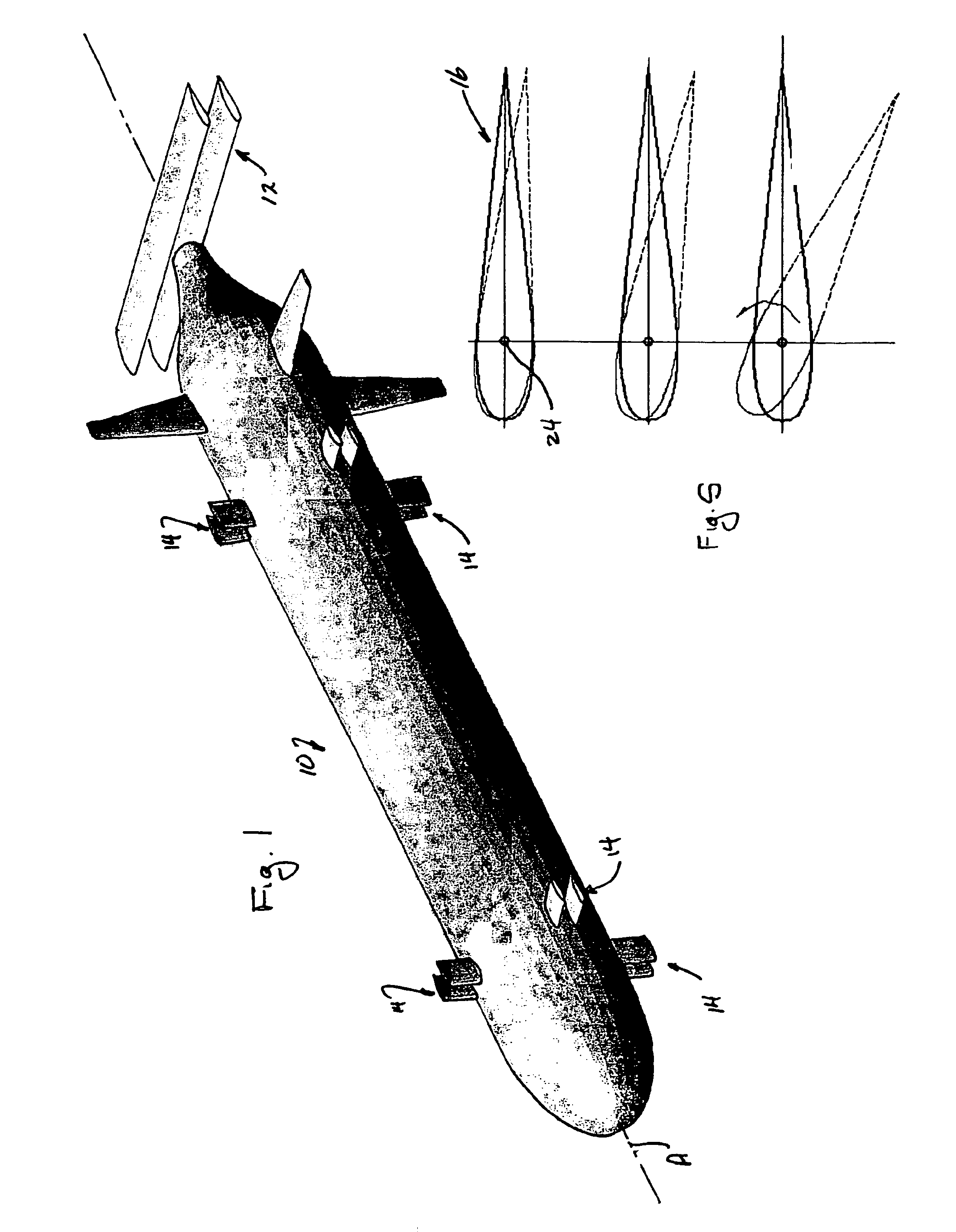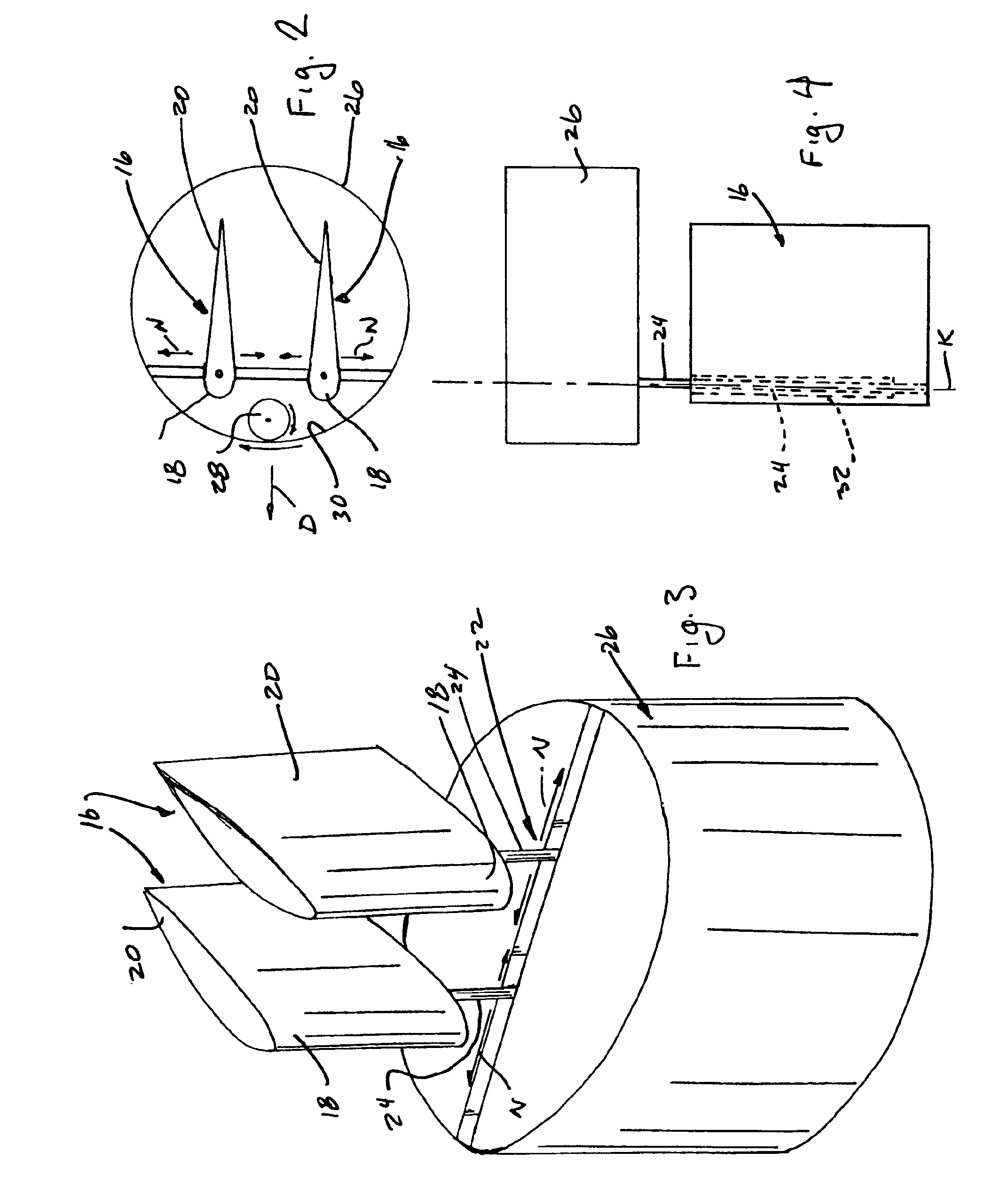Oscillating foil propulsion system
a propulsion system and oscillating foil technology, applied in the field of propulsion systems, can solve the problems of little power consumption of the mechanism or no power at all, and achieve the effect of reducing the lift/drag ratio, increasing the lift, and improving the thrust and efficiency created by the pair of oscillating foil members
- Summary
- Abstract
- Description
- Claims
- Application Information
AI Technical Summary
Benefits of technology
Problems solved by technology
Method used
Image
Examples
Embodiment Construction
The present invention provides a propulsion system based on the principles of thuniform movement, namely the movement of a foil member in a sideways or vertical manner to achieve forward movement of a vehicle or living body. Such movement is found in nature with fast moving fish or mammals such as tuna, sharks, dolphins and whales. Thuniform movement differs from undulating propulsion systems as used by slower moving fish such as eels. In addition the present invention is based on the principles associated with a “WIG effect” as mentioned hereinabove.
With reference first of all to FIG. 1 a vehicle 10 is shown therein as having a plurality of propulsion systems 12, 14 in accordance with the present invention mounted thereto. The system 12 is provided at the rear end of the vehicle and is intended to impart forward motion only to the vehicle. The systems 14 are mounted to the body of the vehicle and are intended to provide thrust at any angle about the mounting axis thereof, through a...
PUM
 Login to View More
Login to View More Abstract
Description
Claims
Application Information
 Login to View More
Login to View More - R&D
- Intellectual Property
- Life Sciences
- Materials
- Tech Scout
- Unparalleled Data Quality
- Higher Quality Content
- 60% Fewer Hallucinations
Browse by: Latest US Patents, China's latest patents, Technical Efficacy Thesaurus, Application Domain, Technology Topic, Popular Technical Reports.
© 2025 PatSnap. All rights reserved.Legal|Privacy policy|Modern Slavery Act Transparency Statement|Sitemap|About US| Contact US: help@patsnap.com



